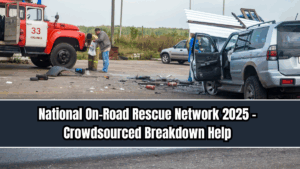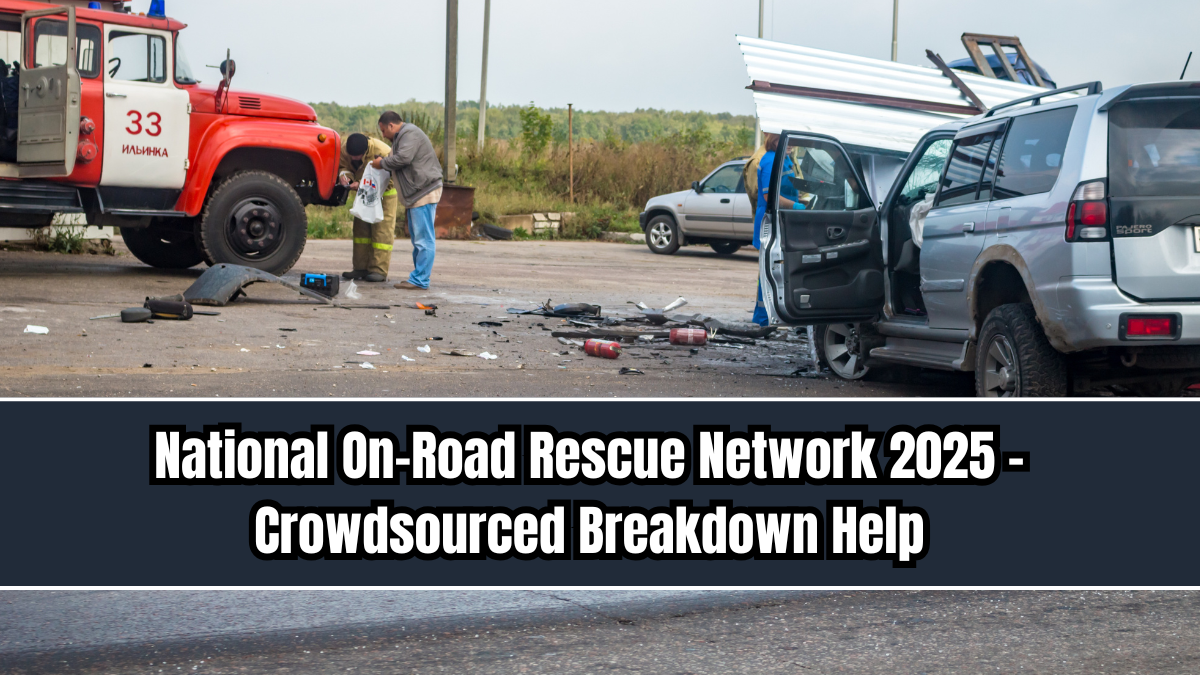In 2025, India has taken a bold step in road safety and mobility assistance with the launch of the National On-Road Rescue Network 2025. This innovative initiative uses crowdsourcing, mobile apps, and community participation to provide quick roadside assistance to stranded drivers across the country.
From flat tires on highways to EV battery failures in remote towns, the program ensures that help is never too far away. It combines the reach of technology with the spirit of community, making India’s roads safer and travel more reliable.

Why a Rescue Network Was Needed
India has one of the largest and most diverse road networks in the world. With millions of vehicles, breakdowns are common—but structured roadside assistance has historically been limited to big cities or premium insurance plans. Drivers in rural and semi-urban areas often rely on chance or local goodwill for help.
The On-Road Rescue Network 2025 fills this gap by creating a nationwide safety net accessible to everyone, regardless of location or vehicle type.
How the Rescue Network Works
The system is built around a dedicated mobile app and hotline:
-
Emergency Request – Drivers facing breakdowns can request help through the app or by calling a toll-free number.
-
Automatic Location Tracking – GPS pinpoints the driver’s exact location.
-
Crowdsourced Helpers – The system alerts nearby registered volunteers, mechanics, or towing operators.
-
Rapid Assistance – Help is dispatched, with estimated arrival times shared in real-time.
-
Digital Payments – Drivers can pay helpers securely through the app.
This structure makes breakdown recovery as simple and accessible as booking a cab or food delivery.
Types of Assistance Offered
The On-Road Rescue Network 2025 covers a wide range of emergencies:
-
Flat tire changes.
-
Fuel delivery for stranded vehicles.
-
Battery jumpstarts and EV battery swaps.
-
Minor on-site repairs.
-
Vehicle towing for major breakdowns.
-
First-aid assistance in case of minor accidents.
The network is especially valuable for EV users, as it integrates with battery swap providers and mobile charging services.
Crowdsourced Community Support
One of the unique aspects of the program is its community-driven model. Local mechanics, garage owners, taxi drivers, and even trained volunteers can register as helpers. In return, they earn income or incentives for providing timely assistance.
This model ensures 24/7 coverage, even in areas where traditional roadside assistance companies cannot operate. It also empowers local communities with additional livelihood opportunities.
Benefits for Drivers and Communities
The program offers multiple benefits:
-
Faster response times compared to conventional roadside assistance.
-
Inclusive coverage, reaching rural and highway areas.
-
Lower costs, as community helpers often charge less than corporate services.
-
Job creation, with thousands of mechanics and drivers joining as certified rescuers.
-
Peace of mind, reducing travel stress for families and long-distance commuters.
By blending technology and community, the network creates a win-win ecosystem for both drivers and helpers.
Technology Backbone
The Rescue Network app uses modern tools to ensure efficiency and transparency:
-
AI-driven dispatch to match drivers with the nearest helpers.
-
Rating and review systems for service quality.
-
Digital safety features like SOS alerts and police integration.
-
Multilingual interface, making it accessible to drivers across India.
With EV adoption rising, the system also integrates with EV charging maps and battery swap networks, ensuring future readiness.
Challenges and Solutions
Like any large-scale program, the rescue network faces challenges:
-
Verification of helpers to prevent fraud.
-
Network coverage gaps in remote areas.
-
User awareness, especially among non-digital populations.
To address these, the government is implementing background checks for helpers, expanding coverage with state-level partners, and offering hotline-based assistance for those without smartphones.
Looking Ahead
The On-Road Rescue Network is expected to expand rapidly in the coming years. Future plans include:
-
Integration with insurance policies, so claims are processed instantly.
-
AI-powered predictive breakdown alerts, warning drivers before issues occur.
-
International expansion, connecting Indian truckers and tourists abroad to similar services.
-
Drone-based delivery of emergency supplies, such as fuel or medical kits.
By 2030, the vision is to create one of the world’s largest digital roadside safety ecosystems, covering every highway and rural road.
Final Thoughts
The National On-Road Rescue Network 2025 is more than just an app—it’s a safety revolution for Indian roads. By blending crowdsourced support, digital payments, and AI-driven dispatch, it ensures that no driver is left stranded.
For drivers, it means confidence and peace of mind. For communities, it means new income opportunities. And for India, it is a giant leap toward smart, safe, and inclusive mobility.
FAQs
What is the On-Road Rescue Network 2025?
It is a nationwide roadside assistance system that uses crowdsourced helpers and technology to support stranded drivers.
How can drivers request help?
Drivers can use a dedicated mobile app or call a toll-free hotline to request assistance.
What kind of help is available?
Flat tire changes, fuel delivery, jumpstarts, EV battery swaps, towing, and minor repairs are offered.
Who are the rescuers?
Local mechanics, garage owners, drivers, and trained volunteers registered with the network.
Is this service available in rural areas?
Yes, the crowdsourced model ensures coverage even in remote locations and highways.
How do payments work?
Payments are made digitally through the app, ensuring safety and transparency.
Will the network expand in the future?
Yes, future plans include AI-powered breakdown predictions, insurance integration, and drone-based assistance.
Click here to know more.
